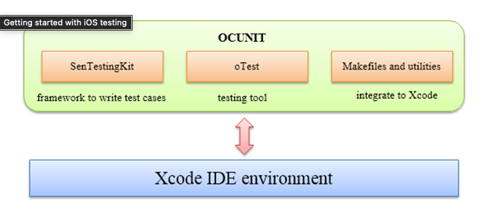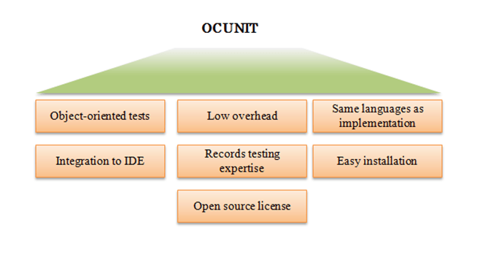Are you searching for an approach that makes sure your apps run smoothly? That is where iOS app testing comes in; It is a necessary step to ensure your apps are top-notch.
This guide will help you understand iOS app testing strategies, automation, and best practices. Sharpen your iOS app testing skills and deliver applications that not only meet but outskill user expectations in the competitive App Store landscape.
What is iOS App Testing?
iOS App Testing process involves examining an iOS application on authentic Apple devices to verify the functionality in response to specific user actions. This includes assessments like installation time, user interface, user experience, appearance, behavior, functionality, load time, performance, App Store listing, support for different OS versions, and more. The aim is to guarantee that the application functions as intended across different aspects.
Why is iOS App Testing Required?
iOS App Testing is required due to the exclusive nature of iOS as Apple's mobile application platform, which was introduced on June 29, 2007. Unlike Android, Apple does not allow the installation of iOS on non-Apple hardware. Consequently, iOS and its applications can only be installed on Apple devices, making it imperative to ensure that your iOS App is compatible with various iOS versions and devices.
Why is iOS App Testing Required? This is the most common question developers ask while creating an iOS application.
It does not matter how much time is invested in design and implementation; mistakes are inevitable, and bugs will appear. Some common types of bugs in iOS applications include:
Application Crashing:
Frequent crashes happening during the execution of an application on Apple devices can be highly frustrating. Most of the time, app crashes are attributed to bugs or memory leaks in the apps.
Application Incompatibilities:
Assume your iOS application may run flawlessly on the current iOS version, but an upgrade in iOS can lead to incompatibility issues, resulting in the app's non-functionality.
Security Vulnerability:
Security vulnerabilities in iOS can increase the chances of your iOS devices getting exposed to potential hacker attacks, leading to the unauthorized access and theft of private information. Recently, various iPhone security vulnerabilities have been discovered in multiple iOS versions.
Memory Leaks:
Memory leaks involve allocated memory blocks that the program no longer uses. These leaks can become responsible for the crashing of your iOS application, making it crucial to find and fix them as they are considered bugs.
Addressing these problems through complete iOS App Testing is vital to ensure a smooth user experience, compatibility across iOS versions, and the security of private information on Apple devices.
Different types of iOS App Testing Strategies
Automated Testing
Automated testing is considered a highly advantageous approach in iOS testing, offering quick identification of bugs and performance issues. The advantages of automated testing are:
- Automated testing can be executed across various devices simultaneously, optimizing time utilization in the testing phase.
- The flexibility of automated testing extends to targeting Software Development Kits (SDKs), which allows tests to be conducted on different SDK versions.
- Automated testing significantly increases testing productivity while reducing the overall costs associated with software development.
- Numerous open-source testing frameworks support automated testing on the iOS platform, providing developers with various options for practical testing.
To conclude, The benefits of automated testing in iOS are significant, offering growth, compatibility testing across SDK versions, increased testing productivity, and a wealth of open-source frameworks to support the automation process.
Unit testing with OCUnit
Unit testing blended with OCUnit became a focused feature with the release of iOS SDK. Initially, the iOS SDK lacked built-in unit testing capabilities, prompting Apple to reintroduce the OCUnit unit test solution in iOS SDK version 2.2.
OCUnit is a testing framework designed for C-Objective in the Mac OS. One of its best features is its smooth integration into the Xcode development environment, providing developers with a user-friendly testing experience, as shown below:

The advantages of OCUnit are highlighted in the image below:

UI Testing with UIAutomation
UI Automation is a JavaScript library from Apple Inc. that facilitates automated testing on real devices and the iOS Simulator, which is integrated into iOS SDK 4.0. This framework makes the testing process smooth, offering benefits such as:
- Reduces the effort required for manual testing procedures.
- Executes tests with minimal memory usage.
- It provides a straightforward UI testing procedure with minimal input and a few button presses to run complete test suites.
Working with UIAutomation:
UIAutomation operates through JavaScript scripts, simulating user events on the target iOS application. Notable classes within the framework include:
- UIAElement Class: It Serves as the superclass for all user interface elements during automation.
- UIATarget Class: Represents high-level user interface elements within the system under test.
- UIALogger Class: This provides test and error information for enhanced functionality.
- UIAActivityView Class: Gives access to and control of activity views within the app.
- UIAActionSheet Class: Allows access to and control of action sheets within the app.
- User Event Action Classes: UISlider, UIAButton, UIAKey, and UIAKeyboard are instrumental in simulating various user interactions.
Advantages:
- UIAutomation provides robust support for gestures and rotation.
- Allows running UIAutomation tests on both the device and the simulator.
- It is Developed in JavaScript, a widely used programming language.
Drawbacks:
- Lacks open-source availability, resulting in limited developer support.
- Faces challenges in smoothly blending with other tools.
Manual Testing
Manual testing is like a hands-on exploration of an app to identify and fix problems. Some misunderstandings about it exist in the tech world. Firstly, manual testing does use tools like JMeter for tasks like load testing. Secondly, it is not true that manual testing does not involve using any software.
Most of the time, people don’t give importance to manual testing as much as to automated testing. But that is not right; even though we have automated tests, they cannot identify all the issues a real person might find. Automated tests are like following a script, but manual testing is more like using the app naturally. Additionally, manual testers can provide valuable feedback on real-life user interactions, enhancing the overall quality of the product.
Manual testing is a constructive approach for developers to understand their application and its user dynamics better.
Advantages:
- Cost-effectiveness as no special tools are required.
- Ability to find issues missed by automated testing.
- Precision in identifying usability problems.
- Valuable insights into real-life user interactions.
Drawbacks:
- It is time-consuming and complex compared to automated testing.
- Potential for human errors, which can lead to inaccurate results.
- Increased testing costs for complex applications.
- Requires testers with specific skills, posing a challenge for recruitment.
How to Create an iOS Testing Strategy
To create a roadmap for testing your iOS app, consider these simple questions:
Device Selection: Figure out which devices you need to test on. If your app is just for iPhones and not iPads, you can concentrate on testing for iPhones.
Real-Device Testing: You need to understand whether testing is required on actual devices or not. Some tests, especially those checking specific hardware features, work better on real iPhones or iPads than computer simulators.
Test Automation Selection: Decide which tests you want to automate. More automation is generally better, but if your resources are limited, prioritize tests important for a good user experience and must be run frequently.
Automation Framework Choice: Choosing the best tool for your iOS testing. If you are testing across different platforms, Appium is an excellent open-source choice. If you're only working on iOS, consider using XCUITest.
Who Writes the Tests: Decide who will be in charge of creating the tests. Usually, the Quality Assurance (QA) team takes the lead, but involving developers can be helpful too.
Once you have clear answers to these questions, you can put your iOS testing into action step by step.
What is the Checklist for Testing an iOS Application?
Here's a simple checklist to evaluate the performance of iOS mobile apps. This checklist focuses on general features rather than specific functions:
- Installation Time: Check how long the app takes to install; it should be reasonable.
- App Icon and Name: After installation, see if the app icon and name is making sense and clearly represent what the app does.
- Splash Screen: While launching the app, check if there is a splash screen and how quickly it transitions to the main screen.
- Home Screen Loading: The main screen loading time needs to be reasonably fast; slow loading might make users quit or uninstall.
- Clarity of Purpose: The app’s primary purpose should be obvious immediately.
- Orientation Support: Test whether the app works well in landscape and portrait modes.
- Offline Behavior: Try launching the app without an internet connection to see if it behaves as expected, with no crashes or blank screens.
- Location Services: If the app uses location, check if it asks for permission and does so only once.
- Push Notifications: For apps with push notifications, confirm that it asks for permission just once.
- Relaunch Behavior: Close and reopen the app from the interface and the device's home button to see if it behaves correctly.
- Settings Listing: Check if the app appears in the iPhone's settings after installation.
- App Store Visibility: After going live, make sure the app is available in the App Store for the supported iOS versions.
- Search Bar Listing: Search for the app by name in the device search bar to confirm its listing.
- Button Consistency: Keep buttons for standard actions (like refresh or reply) unchanged.
- Button Functions: Check that standard buttons do what they are supposed to and are not used for other functions.
iOS Testing Best practices
To improve your iOS testing, follow these simple tips:
Parallel Test Execution: Instead of running tests sequentially, employ a test grid to execute multiple tests simultaneously. This approach yields quicker results, enabling faster app delivery to users.
Real Device Testing: While simulators are helpful in the early stages, testing on actual devices produces more reliable results. If physical Apple devices are not readily available, consider utilizing the Sauce Labs test cloud for remote access.
Test Consolidation: Opt for a framework like Appium when conducting cross-platform tests. It allows you to write tests once and run them across various operating systems, smoothening the testing process.
Environment Configuration Tests: Despite the perceived consistency of iOS environments compared to Android, it's crucial to recognize environmental configuration tests. iOS users can customize settings, install alternative browsers, or even "jailbreak" their devices. A complete testing should account for these variables to ensure flawless app performance under diverse user configurations.
Unit and End-to-End Testing: Avoid viewing unit and end-to-end tests as mutually exclusive. Incorporate both to maximize problem detection before it impacts users. This dual approach facilitates early bug identification during the development phase, making them easier to address.
Conclusion
Now we know iOS App Testing is like a health check for iPhone and iPad apps to check if they work well and provide a smooth experience for users. It involves using tools and strategies to catch any issues, like crashes or slow loading times, making sure the app does what it is supposed to.
To make it easy for you, iOS App Testing is like ensuring your favorite apps are in top shape, and Saffron Tech is an expert in developing software and mobile apps. The team helps ensure that when you download an app on your iPhone, it works smoothly through thorough testing and development.
Reach out to us today to elevate your iOS testing experience.
Subscribe to Saffron Tech
Explore your marketing zen with our newsletter! Subscribe now.




